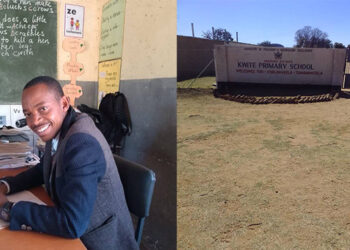ZIMBABWE’S recently appointed ministers for key economic sectors have pledged to sustain the current economic growth trajectory and stability, which are imperatives towards achieving Government’s Vision 2030.
The economy is projected to grow by 5,3 percent this year, largely driven by strong performance in sectors such as agriculture, mining, tourism and manufacturing, as well as the infrastructure development sub-sector.
The ministries have different economic blueprints guiding their growth aspirations and contribution to overall economic development.
However, the economy is riding on the five-year economic blueprint, the National Development Strategy 1, which is aimed at realising the country’s Vision 2030.
The objectives of the strategy include strengthening macroeconomic stability, characterised by low and stable inflation, as well as exchange rate stability, and achieving and sustaining inclusive and equitable real gross domestic product growth.
In this regard, Finance and Investment Promotion Minister Professor Mthuli Ncube has vowed to continue supporting the cause and sustain stabilisation policies that are in place.
Following an indifferent first half of the year, Government, in the second half of the year, instituted a raft of measures to tame runaway inflation and the exchange rate, and the economy has in recent months witnessed stability, while prices for most basic goods have dropped.
The measures, which include a tight fiscal and monetary policy, have since had a positive impact on the economy, as the exchange rate has stabilised while inflation continues to slow down.
“We are going to continue to mop up liquidity from the economy and continue to strive for stability. We shall continue to manage the payment of contractors so that we don’t push too much liquidity into the economy, as we continue with the stabilisation policies that are in place,” he said in an interview.
Part of the measures are keeping the bank policy rate and medium-term lending rate at 150 percent and 75 percent, respectively.
“We have managed to regulate the payment of contractors so that we don’t put excess liquidity in the market.
“Also, on the monetary front, we are continuing with our tight fiscal policy to ensure that we don’t push too much liquidity into the economy,” said Minister Ncube.
He noted that the Zimbabwe dollar is stable and inflation has been dropping, hence, everything is going according to plan.
“We are also expecting growth to be strong, ending the year closer to 6 percent on the back of strong performance in the last three years.
“The strongest performing sectors will be agriculture, mining, infrastructure development and manufacturing. Tourism is growing, and it is really the fastest-growing sector in the economy and has recovered well from the Covid-19 era,” the Finance Minister said.
Minister Ncube, with the expanded mandate of investment promotion, will ensure investments come through across all sectors of the economy.
The Government is already working on a new industrial development policy, which seeks to grow the sector by at least 2 percent annually over the next six years.
Taking advantage of the strong linkages and interdependence between the manufacturing and agriculture sectors, special focus would be on value chain development.
Newly appointed Industry and Commerce Minister Dr Sithembiso Nyoni said focus will be on continuing to pursue sustained economic growth.
She said there are many projects at different stages within the manufacturing sector and commerce.
“We need to come up with incentives that encourage production and ensure infrastructure development plays a central role in achieving production growth,” she said.
Infrastructure development has been one of the key deliverables of Government. Crucial projects on roads, dams and irrigation have been completed, while others are at different stages of construction.
However, Confederation of Zimbabwe Industries president Mr Kurai Matshezha said industry will continue to engage the Government on policies and issues impacting the sector for the good of the economy.
Meanwhile, Tourism and Hospitality Industry Minister Barbara Rwodzi said her focus will be to exceed the targets set in the tourism recovery and growth strategy.
“We have a US$5 billion target, but we are now looking at how we can exceed it through the development of better strategies,” she said.
Zimbabwe’s tourist arrivals surged by 50 percent in the first half of 2023, as the industry witnessed substantial growth.
Several international airlines have been flying into Zimbabwe. They include Lufthansa Airlines, Emirates, Ethiopian Airlines, Kenya Airways, South African Airways, ComAir, British Airways and RwandAir.
Minister Rwodzi said she will ensure more airlines fly into Zimbabwe, while also addressing the affordability of domestic flights to encourage domestic tourism.
The Government has since made significant progress in the implementation of the National Tourism Recovery and Growth Strategy, which seeks to grow the tourism economy to US$5 billion by 2025.
In August 2020, President Mnangagwa launched the tourism growth plan as he led the restart of the sector’s contribution to the national economy, after the industry was crippled by the outbreak of the Covid-19 pandemic.
The National Tourism Recovery and Growth Strategy is anchored in Zimbabwe’s vision to be a prime international tourist destination, based on the judicious and sustainable exploitation of the unique assets of nature, culture, heritage and the built environment.
Source ZimSituation









